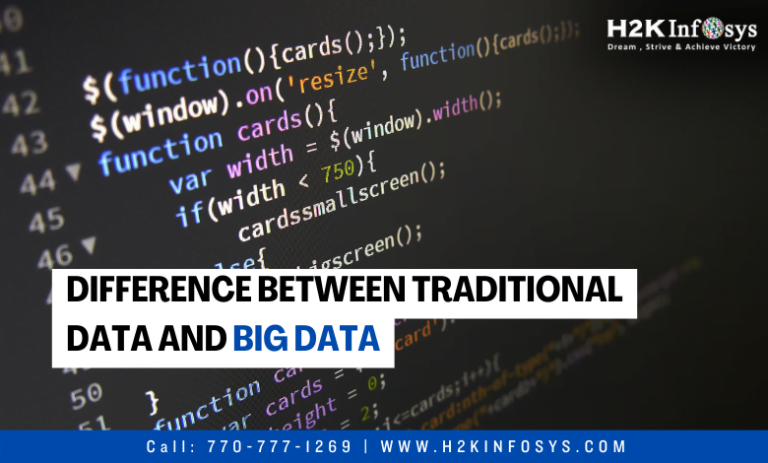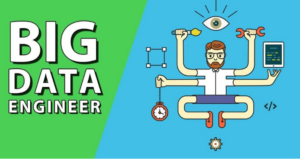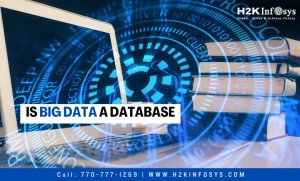Organisations have been processing and storing data for several decades in order to gain insightful information. In contrast, the term “Big Data” is significantly more recent. What precisely distinguishes Big Data from Traditional Data, then? Traditional Data is the relational, structured data that businesses handle, store, and utilise. The phrase “big data” encompasses not just the amount of data but also its diversity, accuracy, speed, and the ways in which businesses analyse it.
There are numerous approaches to comprehending the distinctions between Big Data and Traditional Data. Enrolling in the Big Data for Beginners course can help you learn more about Big Data and Traditional Data.
Big Data vs Traditional Data
There are a few factors that you may use to determine the differences between Big Data and Traditional Data. Less emphasis is placed on the amount of data between the two than there is on its diversity, velocity, and management.
The methods, strategies, procedures, and goals employed inside that extract valuable insights from the information are largely responsible for the distinction between Big Data and Traditional Data. Now let’s examine in more depth how traditional relational databases and big data vary from one another.
Big Data vs Traditional Data: Flexibility
A static relational database serves as the foundation for traditional data functions. It is more inflexible by nature, allowing only organised data to fit into the patterns with ease. Contrarily, big data is more unstructured and stores both organised and unstructured data using innovative techniques. Big Data can store a wider variety of information and be more versatile because of its dynamic schema.
Big Data vs Traditional Data: Real-Time Analytics
Analytics are only possible with traditional databases after an event. This strategy is beneficial since it leaves less room for error. But it also drastically restricts the data’s use. However, real-time analytics are now feasible thanks to big data. This capability is extremely useful in industries including manufacturing, transportation, healthcare, and safety.
Big Data vs Traditional Data: Distributed Architecture
The architectures of Big Data and Traditional Databases differ as well. The traditional database’s centralised architecture may limit its applicability. Conversely, big data is built upon a distributed architecture. It is more economical and scalable because of this feature. Big Data storage is more cost-effective because of features like open-source software and cloud-based storage.
Big Data vs Traditional Data: Multitudes of Sources
The sources are one of the primary distinctions between traditional databases and big data. In the past, companies could only obtain information from a restricted number of sources, which further hampered their ability to compete. However, the number of data sources has increased exponentially in recent years, and businesses may now collect diverse types of data from a variety of sources. It enables us to keep greater variety in addition to obtaining a large amount of data.
Big Data vs Traditional Data: Enables Exploratory Analysis
In the past, data analysis was only used to get detailed understanding of consumer requests or to gain insights into customer problems that needed to be answered. These worries served as the main foundation for the data reports. On the other hand, the breadth of an iterative approach to data is now feasible due to the rise of Big Data.
From a business perspective, Traditional Data can provide monthly reports, customer surveys, and in-depth insights. On the other hand, thanks to data-driven, more precise statistics, big data can assist enterprises with sentiment analysis, market forecasting, preventive actions, and much more.
Big Data vs Traditional Data: Data Size
The scale of traditional databases and big data is one of the primary distinctions between the two. Traditional data volumes are typically measured in gigabytes and terabytes, allowing for storage on a single, central server. Big Data, on the other hand, can be quantified in petabytes, zettabytes, exabytes, etc. As a result, it also calls for more contemporary analysis and storage options.
Big Data vs Traditional Data: Infrastructure Required to Manage Data
The management tools that separate Big Data from Traditional Data Warehouses are one of the main distinctions. Traditional data may be stored and examined more affordably since it is easier to handle and has a lower file size. On the other hand, big data requires more sophisticated technological management techniques, which raises the cost.
How are They Similar?
There are a few parallels between Big Data and Traditional Data despite their extreme differences. Here are some instances of how traditional data and big data are similar.
Security
Regardless of the type of data (Big Data or Traditional Data) security is crucial. It is now more crucial than ever to safeguard sensitive data of all kinds against loss and unauthorised access due to the increase in cybercrime.
Analysis
Although the assessment of the Traditional vs. Big Data strategy differs greatly, data analysis is essential to extracting knowledge and insight from collected data. Traditional data is analysed using data visualisation and other statistical tools, while Big Data is analysed using more sophisticated technologies like machine learning.
Quality
The degree of correctness in data establishes its reliability. This implies that for companies using datasets to make well-informed decisions, data quality is critical in all situations.
Storage
For organisations, data management and storage are essential. Large data typically need more sophisticated technological storage databases, such as cloud-based storage. Relational databases, on the other hand, are where traditional data is kept.
Value
For an organisation to function properly, both forms of data are critical, even though traditional and big data business practices differ greatly. Traditional data can identify patterns and trends from previous data, while big data can assist create new opportunities and guide wise decisions.
What Should You Choose between Big Data and Traditional Data?
Having discovered all the differences and similarities between Big Data and Traditional Data, the fundamental query still stands: which of the two should you pick? It’s not nearly that easy to answer. For every organisation to function well, it needs both of these kinds of data. While Big Data can be used in a variety of ways to forecast the future and ensure the smooth operation of your company, Traditional Data provides insights into the past and can thus be utilised to rectify errors.
In the end, traditional data still makes up a large portion of today’s data, and businesses cannot operate without it. However, as big data grows in popularity, additional opportunities for scaling are emerging. A company must appropriately handle, store, and utilise both data types to stay ahead of the competition.
Conclusion
Contrary to popular belief, traditional data will not disappear as big data becomes more prevalent. When it comes to the kind of data needed, every industry and business has various requirements. In light of this, companies must strike the ideal balance between the two. In this manner, they can use the knowledge gleaned from these databases to their upcoming projects. Check out the Big Data online training to learn more.





























